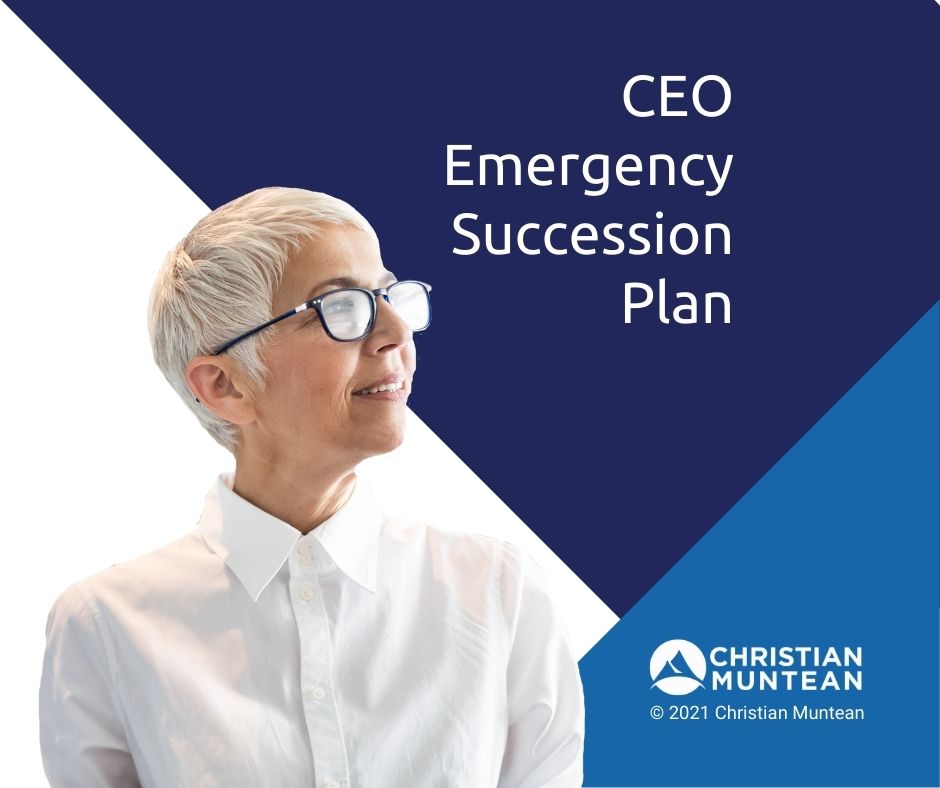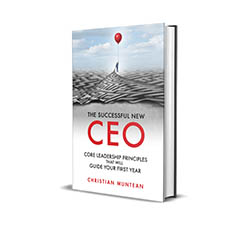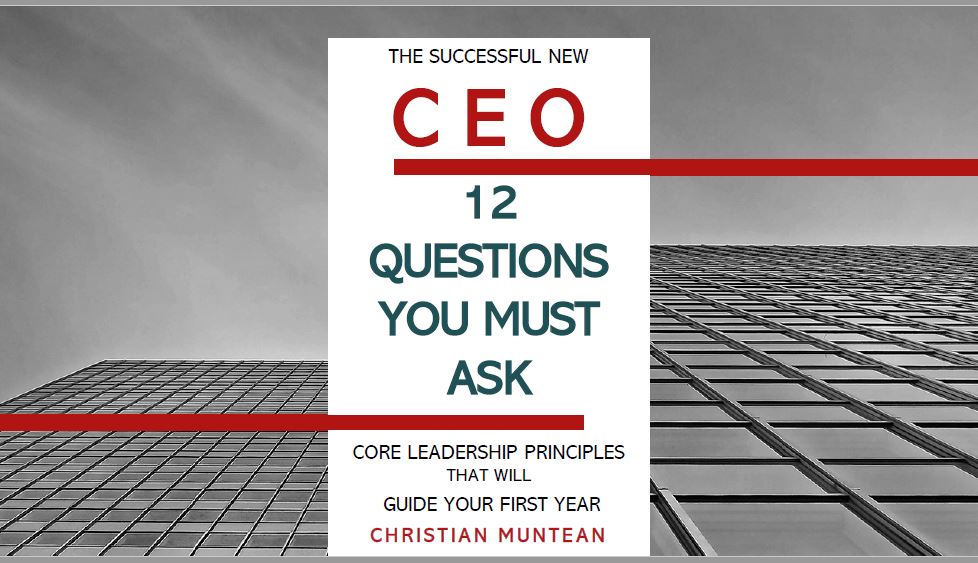Succession Planning: Often Like Building a Bridge As You Cross It

This is the fifth article in a short series on executive succession planning. We are following Western Manufacturing’s board and senior management team as they plan for their founder, William’s, succession. They have completed the major steps:
they plan for their founder, William’s, succession. They have completed the major steps:
- Defining their values & and a five-year operating vision.
- Creating a rough sense of what the company will need to look like in five years to meet that vision.
- Identifying key areas in the company that should be stabilized before a succession occurs.
- Described the qualities of an ideal successor.
As they begin to work on the plan, it starts to become evident that there may be some problems that undermine the credibility of the succession process. Read as they discover what the problems are and how to fix them.
If you’d like to start the series from the beginning, click here.
A Wrinkle in the Works
Carla sat alone in her office. The succession committee had just met. Carla had left feeling…weird.
The problem started at the end just before they closed the meeting. Ernie mentioned to the others that he thought Carla best fit the description they all came up with – why not just make her the successor?
He asked if she was interested.
The truth was, William had told her the same thing before this process had started. But she had kept that to herself. Originally, she hadn’t felt interested. The role seemed too big. Too hard. But through the previous work, Adrian, their consultant, had done with the group, she had actually felt excited about the idea. She could see herself in the role.
“I’ve been thinking about it. And I am interested.” Carla said.
Before she could say more, Ernie beamed at the committee, “See, we’ve found her! Our work here is done!”
She wasn’t sure what response she expected from the others. But it wasn’t for them to look away and shift awkwardly in their seats.
Tim spoke up, “Maybe. And I respect you, Carla. But I think we should go through the process.”
“Why waste time and money on a search process?” Ernie asked. “Carla’s here, we know her, let’s just vote on this and move on.”
“You brought this up right at the end of the meeting, Ernie. This should have been on the agenda. Or brought up differently. Let’s table it and talk about it later,” Tim said. The others agreed. They decided to meet again next week and closed the meeting.
Confusion: Were Things Going Sideways?
It was hard to put a finger on what she was feeling. Frustrated? Disappointed? Definitely confused.
The succession committee was made up of the entire board, except the outgoing founder, William. Carla, who was Vice-Chair of the board, had been chairing the succession committee meetings.
Up until recently, the board in general and the succession committee had always worked well together. As an employee-owned company, strong relationships were important.
In terms of succession, they had developed a clear sense of the direction they wanted to take the company, and the kind of leader needed. Their next steps had been to decide how to look for candidates. Originally, this was thought to be a “no-brainer.” Their company hired people all the time. How difficult could this be? If they needed to, they could hire an executive search firm.
But what had seemed simple had started to feel complicated. And today it started to feel personal. It didn’t make sense to Carla.
She looked out her window. Tim, the VP of Product Development, and Ernie, the CFO, were walking across the parking lot. As Western Manufacturing was an employee-owned company, both also served on the board. Their conversation was animated.
As they neared their vehicles, they stopped. Tim gestured dismissively back towards the building. “Are they talking about me?” she wondered.
Western Manufacturing had always been a healthy workplace, where people talked openly about concerns. But now she wondered if some were holding back. That didn’t feel good.
Carla decided to call Adrian, their consultant.
Credibility: It’s Not Just the Currency of Leadership.
“Hello Carla! Great to hear your voice!” Adrian said.
“It’s good to hear yours too, Adrian. I wish I was calling in better circumstances.”
“What’s going on?” Adrian asked.
Carla caught him up on the process so far and how she was feeling. She surprised herself at the level of emotion she felt as she described it.
Adrian asked a few questions and listened. Eventually, he said, “I believe I know what’s happening.”
“What is it?” asked Carla.
The Process Needs Credibility
“The process isn’t trusted,” Adrian answered. “No one is doing anything intentionally wrong, but you are violating four of the Five Principles for Credible Processes. And the fifth is at risk because of it. There are many ways to construct a process. But whatever way you choose, it needs to follow five specific principles to be trusted, or accepted, by others.”
“What are the Five Principles?” Asked Carla. “I’ve never heard of them.”
“You probably haven’t,” said Adrian. “But as I describe them, I think you’ll realize what I’m talking about.”
The Five Principles of Credible Processes
“The Five Principles are these:
- The process is defined in advance: The process is defined and agreed to before decisions are actually made. This helps the process be more objective and less emotionally driven or interpreted.
- Clarity: The process is clear. Both the decision-makers and even key stakeholders understand what the process is.
- Quality of leadership: The leaders or decision-makers are viewed as competent and credible. Very specifically, this means people believe these leaders care, can be trusted, and have the ability to do the job.
- Transparency: Movement through the process has an appropriate level of transparency. Obviously, decisions and negotiations need some safety and privacy to be fully developed. But regarding movement through the process, transparency is beneficial.
- Conflicts of interest are addressed: A conflict of interest is when any party has more than one interest at stake. Ideally, a policy detailing how conflicts of interest will exist and be followed.”
“In your case, your team has accidentally violated four out of the five principles,” said Adrian.
“What? We’re that bad?” asked Carla.
“Not bad,” said Adrian. “Your situation is common. Most companies don’t think about succession until it’s happening. For most companies, like yours, the problems are entirely due to just being overlooked.
These principles are often chained together: Because you didn’t have a succession process defined in advance, there was nothing to be clear about. And that makes transparency more difficult.
Last, in your case, you sit on the succession committee while you are interested in the role. That’s a clear conflict of interest.
The main principle the succession committee has going for it is the quality of leaders involved. But if these other issues aren’t addressed, that may come into question as well.”
Adrian continued, “Here’s why this is important: Succession is a major change. Perhaps the biggest change the company has faced to date. Change generates anxiety or fear. Most of those anxieties or fears are because of the ambiguity of the unknown – about the future, about the process, about anything. Last, ambiguity breeds misunderstandings and conflict.
That is what is happening in your meeting.”
“That makes sense,” said Carla, “I didn’t think we were such a mess.”
“You aren’t a mess,” said Adrian. “But the process becomes messy quickly. That’s why whatever process you use needs to satisfy each of the Five Principles. If it does, you’ll do fine. However, if you don’t address them, your leadership risks losing its credibility.”
“What should we do?” asked Carla.
Building the Bridge as You Cross It
“Your challenge is common. You are building the bridge as you cross it. Nearly all organizations going through succession do the same thing. It’s not ideal. It leaves the door open for problems.
But this is where you are at. So, it is where you need to work from. The goal is to bring the process back into alignment with these principles as quickly as possible.” said Adrian.
“Would you be willing to introduce these to the committee?” asked Carla. “I’m concerned that if I have a conflict of interest, my motivations may be questioned if I try to introduce a change or structure to our process.”
“I’d be happy to,” said Adrian.
Restoring Credibility
Adrian did present the Five Principles to the succession committee. They agreed that their accidental violation of these principles is what created the tension they were feeling.
To come into alignment with these principles, the committee made these agreements:
- Because Carla was interested in being considered for the CEO position, she would recuse herself from the succession committee process. Jim, the VP of Business Development, who had no interest in being CEO, would become chair of the succession committee.
- The succession committee also agreed to draft and adopt a conflict-of-interest policy. They realized that this was probably also needed at the board level – and so that topic was placed on the board agenda.
- Ernie would work with Stephanie, the HR Director, to draft an outline of the succession and selection process. This would be announced to all employees.
- They agreed to communicate updates through the process to the staff, regularly, at the monthly all-hands meeting. Additionally, because they were “building the bridge as they crossed it”, they decided they needed to be transparent about that – and commit to communicating any major updates or changes to the process as soon as possible.
As the meeting drew near a close, Adrian said, “This is great work! You’ve addressed the four violated principles and have a path to making them right. Doing so will preserve the quality and credibility of your leadership of this process.”
Tim spoke up, “I’ll be honest, I thought this meeting was going to be very uncomfortable. But talking directly about things and having these principles has really helped.”
Heads around the room nodded in agreement.
Stephanie chimed in, “I couldn’t agree more. I’ve always valued how respectful leadership has been of each other. But that was always easier when William provided the direction or focal point for alignment. Now that we need to make these decisions, I can see that we need to put a little more thought into how we do this.”
As the meeting closed, Carla realized she felt more at peace. Lighter. Admittedly, it was uncomfortable not being “at the table” anymore in terms of decision-making. But she trusted the group, and the process they were going through.
She realized that if she were selected to be the next CEO, she would want each of them to trust the process that brought her there as well. The work that they had done today would help.
Next in the series: The succession committee will engage an executive search firm.
Take good care,
Christian
𝗧𝗵𝗲 𝗕𝗲𝘀𝘁 𝗧𝗶𝗺𝗲 𝘁𝗼 𝗖𝗿𝗲𝗮𝘁𝗲 𝗔𝗻 𝗘𝗺𝗲𝗿𝗴𝗲𝗻𝗰𝘆 𝗦𝘂𝗰𝗰𝗲𝘀𝘀𝗶𝗼𝗻 𝗣𝗹𝗮𝗻 𝗶𝘀 𝘽𝙚𝙛𝙤𝙧𝙚 𝗬𝗼𝘂 𝗡𝗲𝗲𝗱 𝗜𝘁.
Be prepared for a smooth transition in the event of an unplanned emergency succession. My guide will show you step-by-step how to devise your own plan.
Free Leadership Resources
Whether you are a new CEO, thinking of succession or exit, or wanting to strengthen your leadership and your team, I’ve got resources to help:
Enhancing your leadership skills
Are you interested in learning more about becoming a successful CEO? If so, get a free copy of my book The Successful New CEO. Not a new CEO? I’ve been told by “old hands” that they felt any CEO should read this. So, click here to get your copy today.
by “old hands” that they felt any CEO should read this. So, click here to get your copy today.
Let’s connect.
I’m passionate about helping leaders to create workplaces they love going to and increasing the value of the services they offer. My results-oriented approach is tailored to each client’s specific situation and needs. As a leadership coach, I have developed a wealth of resources to help you and your team grow and become stronger.
Weekly Newsletter – sign up to receive my weekly articles addressing critical leadership challenges and issues.
The Leadership Coach Podcast – In my podcast, we explore effective, high-impact, and enjoyable leadership. Subscribe.
There are 𝟭𝟮 𝗰𝗿𝗶𝘁𝗶𝗰𝗮𝗹 𝗾𝘂𝗲𝘀𝘁𝗶𝗼𝗻𝘀 to ask before accepting a new CEO position. Do you know what they are? Instantly download my free e-book here.
Find the value of your company with my free assessment tool: The Value Builder System
The Value Builder System™ is a 13-minute online questionnaire that evaluates your business on the eight factors that contribute more to its attractiveness and value. These factors are scored on a scale of 1-100. Businesses that score over 80 are likely to command 70%-100% higher value than others.
Opportunities
Executive and Leadership Coaching: Do you feel overwhelmed? Are you not getting the results you expect from the effort you are putting in? Do you find yourself facing similar challenges time and time again? Would you like to change specific ways of relating or reacting? If you would like to experience predictable, measurable growth Contact me.
Profitable Exit Strategy Workshop: Are you a business owner or partner? Over 55? Starting to think about exiting your business or active management in the next 3-5 years?
- Curious about what your business might be worth?
- Would you like to discover the specific steps you need to take to increase its value and become highly attractive to a buyer?
- Are you planning on handing it over to family or employees and you want to ensure long-term success?
If so, contact me now
Article Categories
Popular articles

Download my free 10-page eBook:
How To Accomplish More Without Doing More:
Eight Proven Strategies To Change Your Life
Discover how to save eight hours during your workweek-even if you're too busy to even think about it. The resource every maxed out executive needs.

